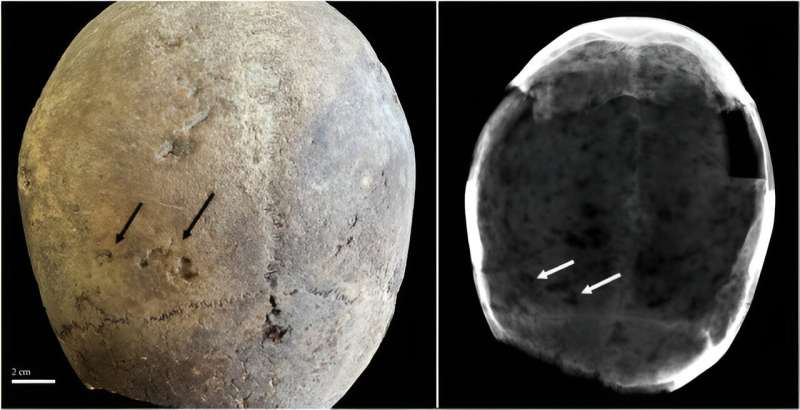August 23, 2024 report
This article has been reviewed according to Science X's editorial process and policies. Editors have highlighted the following attributes while ensuring the content's credibility:
fact-checked
peer-reviewed publication
trusted source
proofread
Evidence found of Europeans using cocaine as far back as the 17th century

A team of biomedical and medicinal specialists from the University of Milan, working with a colleague from Foundation IRCCS Ca' Granda Ospedale Maggiore Policlinico di Milano, has found evidence of cocaine use by at least two people as far back as the 17th century in Europe.
In their study, published in the Journal of Archaeological Science, the group analyzed the preserved brains of two people found in a crypt in Milan used as a burial site for people who died in the nearby Ospedale Maggiore—a well-known hospital of the time.
Prior research has found that for thousands of years, people living in western parts of South America chewed on the leaves of the coca plant to experience its chemical effects. After it was found that the leaves could be processed to make cocaine hydrochloride salts in the 19th century, the mind-altering effects of the drug became more widely known and it became a popular recreational drug in many parts of Europe.
In this new study, the research team found evidence that people were chewing the leaves of the plant to get high in at least one part of Europe nearly 200 years earlier.
The team studied the remains of people entombed in the Ca' Granda crypt, which was used as a burial site for approximately the entirety of the 17th century. As part of their work, they discovered the remains of two people who had been mummified. Study of the remains showed that both had active components of the coca plant in their brains, which meant they had been chewing its leaves.
The research team also studied the pharmacological records of the Ospedale Maggiore and found no records of cocaine or coca plants being used for medicinal purposes. This suggested that the two people had been chewing the leaves for other reasons. The team noted that the two mummified individuals were buried in a place and in such a way as to suggest that they were poor, further suggesting that the coca leaves were cheap and likely plentiful and that they were chewed recreationally.
More information: Gaia Giordano et al, Forensic toxicology backdates the use of coca plant (Erythroxylum spp.) in Europe to the early 1600s, Journal of Archaeological Science (2024). DOI: 10.1016/j.jas.2024.106040
Journal information: Journal of Archaeological Science
© 2024 Science X Network





















